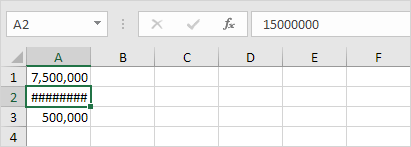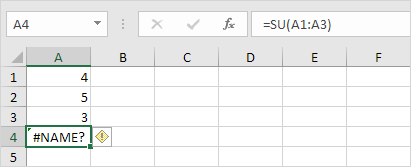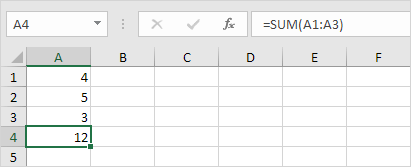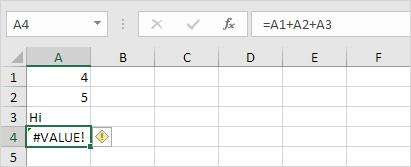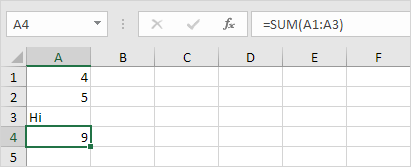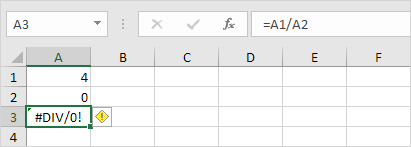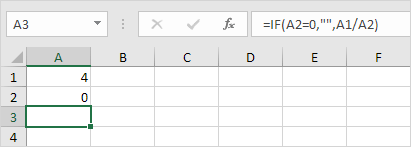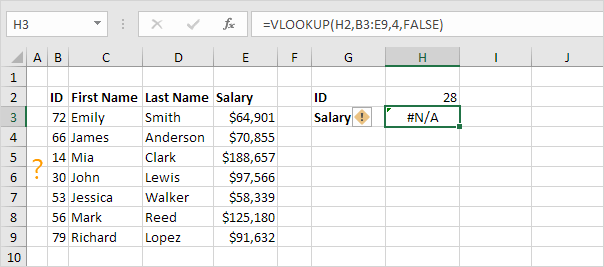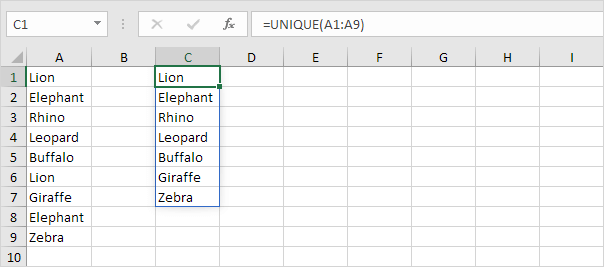Table of Contents
Formula Errors
This chapter teaches you how to deal with some common formula errors in Excel. Let’s start simple.
#####
When your cell contains this error code the column isn’t wide enough to display the value.
1. Click on the right border of the column A header and increase the column width.
Tip: double click the right border of the column A header to automatically fit the widest entry in column A.
#NAME?
The #NAME? error occurs when Excel does not recognize text in a formula.
1. Simply correct SU to SUM.
#VALUE!
Excel displays the #VALUE! error when a formula has the wrong type of argument.
1a. Change the value of cell A3 to a number.
1b. Use a function to ignore cells that contain text.
#DIV/0!
Excel displays the #DIV/0! error when a formula tries to divide a number by 0 or an empty cell.
1a. Change the value of cell A2 to a value that is not equal to 0.
1b. Prevent the error from being displayed by using the logical function IF.
Explanation: if cell A2 equals 0 an empty string (“”) is displayed. If not the result of the formula A1/A2 is displayed.
#REF!
Excel displays the #REF! error when a formula refers to a cell that is not valid.
1. Cell C1 references cell A1 and cell B1.
2. Delete column B. To achieve this right click the column B header and click Delete.
3. Select cell B1. The reference to cell B1 is not valid anymore.
4. To fix this error you can either delete +#REF! in the formula of cell B1 or you can undo your action by pressing CTRL + z
#N/A
The #N/A error appears when the VLOOKUP function (or XLOOKUP MATCH etc.) can’t find a match.
1. In the example below ID 28 cannot be found.
2. Use the IFNA function to replace the #N/A error with a friendly message.
#NUM!
Excel shows the #NUM! error when a formula contains invalid numeric values.
1. For example the SQRT function below cannot calculate the square root of a negative number.
2. Change the number in cell A1 to a positive number.
#NULL!
The intersect operator (single space) returns the intersection of two ranges. When two ranges don’t intersect Excel displays the #NULL! error.
1. The formula below returns #NULL! because the two ranges don’t intersect.
2. The formula below doesn’t return the #NULL error.
Note: =SUM(F2:G2) produces the exact same result!
#SPILL!
If something is blocking a spill range Excel displays the #SPILL! error.
1. Simply empty cell C6 to fix the #SPILL error.
Note: this dynamic array function entered into cell C1 fills multiple cells. Wow! This behavior in Excel 365/2021 is called spilling.
